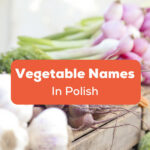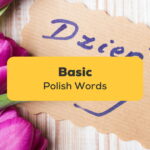Have you ever found yourself struggling to make Cantonese words plural? Trust me, you’re not alone. Regardless of how many languages you know, it can be a tricky concept to grasp.
That’s why, today, we will break it down and make it simple. In this comprehensive guide, we’ll cover everything you need to know about making Cantonese words plural.
Now, I know what you might be thinking. Plural forms? That doesn’t sound like the most exciting topic out there.
But trust me, mastering plural forms is essential to communicating effectively in Cantonese. Let’s make the most of your Cantonese language learning journey today!
Cantonese Nouns And Plural Forms
Let’s start at the very beginning, okay? If you’re learning Cantonese, one of the first things you’ll need to know is how to make Cantonese nouns plural.
Luckily, it’s not rocket science, but there are a few things to remember. Let’s explore how plural forms are created in Cantonese and some of the exceptions to the rule.
Making Cantonese Plural By Adding The Suffix “哋” (dī)
In Cantonese, creating plural forms is generally done by adding the suffix “哋” (dī) to the end of a noun.
For example, the word for “person” in Cantonese is “人” (yàhn). To make it plural, you would add the “哋” (dī) suffix and get “人哋” (yàhndī), which means “people.”
Not All Cantonese Nouns Can Be Pluralized Using The “哋” (dī) Suffix
While adding the “哋” (dī) suffix is the most common way of creating plural forms in Cantonese, not all nouns can be pluralized this way.
Some nouns already indicate plurality in their singular form, while others use different pluralizing methods.
For instance, the word for “fish” is “魚” (yùh), and it doesn’t take the “哋” (dī) suffix in its plural form. Instead, the plural form of “魚” (yùh) is “條魚” (tìuh yùh), which means “fishes.”

Measure Words In Cantonese
Now let’s talk about the measure words in Cantonese! These are important when pluralizing nouns and are not as complicated as they seem.
Let’s break it down for you and give you the lowdown on measure words and how they work.
Importance Of Measure Words In Cantonese
Without these measure words, Cantonese would be a confusing language. I mean, how else are you supposed to know if someone is talking about one Cantonese book or two books?
Measure words are like little helpers that let you know exactly how many of something you’re talking about.
They make things sound more natural and fluent when you’re speaking Cantonese. Still confused? Let me take a shot at explaining it.
Imagine you’re strolling in Hong Kong and bump into a friend who just went on a shopping spree in Cantonese stores. He exclaims, “I have shoes!” and you’re like, “Oh cool, how many?”
See, without a measure word, you’re left scratching your head, wondering if they have one pair or a whole closet full.
That’s why using the right measure word in Cantonese is crucial to ensure everything is clear.
For shoes, you’d use “雙” (sēung), which means “a pair.” So, with the right measure word, your friend can clarify that they have multiple pairs of shoes.
Measure Words For Different Types Of Nouns
So, in Cantonese, different measure words are used for different types of nouns. It’s like choosing the right tool for the job.
Like if you’re talking about human nouns, animals in Cantonese, or objects without a specific shape or form, you’d use the measure word “個” (gó).
It’s like the Swiss Army knife of measure words — you can use it for all sorts of things, like “人” (yàhn) – person, “狗” (gáu) – dog, or “杯” (būi) – cup.
But if you’re talking about something long and thin, like a fish or a snake, you’d use the measure word “條” (tìuh).
It’s like the chopstick of measure words, perfect for those long and skinny objects.
Examples Of Measure Words Used In Cantonese Sentences
Example 1:
Noun: 狗 (gáu) – dog
Measure word: 隻 (jek) – for animals
Sentence: 我有一隻狗 (ngóh yauh yāt jek gáu) – I have a dog
Example 2:
Noun: 杯 (būi) – cup
Measure word: 隻 (jek) – for small objects
Sentence: 我要一隻杯 (ngóh yiu yāt jek būi) – I want a cup
Example 3:
Noun: 魚 (yùh) – fish
Measure word: 條 (tìuh) – for long and thin objects
Sentence: 我要兩條魚 (ngóh yiu lèuhng tìuh yùh) – I want two fish

Grammar Of Cantonese Plural Nouns
Now it’s time to ponder how they fit into the language’s grammar. We’ll get knee-deep on how plural nouns are used in Cantonese sentences.
We’ll discuss where they go in the sentence, how it is structured, and even how they show up in negative sentences and questions.
Plural Words In Word Order And Sentence Structure
When it comes to using plural words in a sentence, it’s the same deal as using singular nouns. But, there are some differences in word order and Cantonese sentence structure.
In the Chinese language, the sentence order is usually subject-verb-object, just like in the English language.
For example, if you wanna say, “I eat apples,” you’d say, “我食蘋果” (ngóh sīk pìhng gwó). Got it? Cool.
Now, if you want to make it plural, it’s super easy. All you gotta do is add a measure word and the “哋” (dī) suffix.
So, if you wanted to say, “I eat two apples,” you’d say, “我食兩個蘋果哋” (ngóh sīk lèuhng gó pìhng gwó dī). Easy-peasy, right?
Negative Sentences And Questions In Plural Cantonese Words
In Cantonese, you make a negative by just adding “唔” (m̀h) before the verb, like “我唔食蘋果” (ngóh m̀h sīk pìhng gwó) meaning “I don’t eat apples.”
If you want to make it plural, throw in a measure word and the “哋” (dī) suffix, like “我唔食兩個蘋果哋” (ngóh m̀h sīk lèuhng gó pìhng gwó dī), which means “I don’t eat two apples.”
As for questions, just add “嗎” (ma) at the end of a sentence, like “你食唔食蘋果嗎” (néih sīk m̀h sīk pìhng gwó ma), which translates to “Do you eat apples?”
And if you want to be even more specific and ask about two apples, go ahead and add the measure word and “哋” (dī) suffix, like “你食唔食兩個蘋果哋嗎” (néih sīk m̀h sīk lèuhng gó pìhng gwó dī ma), meaning “Do you eat two apples?”
Examples Of Plural Nouns Used In Various Sentence Structures
Example 1: Positive sentence
Noun: 車 (chē) – car
Measure word: 部 (bou) – for vehicles
Sentence: 我有兩部車哋 (ngóh yauh lèuhng bou chē dī) – I have two cars
Example 2: Negative sentence
Noun: 餅 (beng) – cake
Measure word: 個 (gó) – for small objects
Sentence: 佢唔食呢個餅哋 (kéui m̀h sīk nī gó beng dī) – He/She doesn’t eat this cake
Example 3: Question
Noun: 魚 (yùh) – fish
Measure word: 條 (tìuh) – for long and thin objects
Sentence: 你食唔食幾條魚哋嗎 (néih sīk m̀h sīk géi tìuh yùh dī ma) – Do you eat some fish?

Other Forms Of Plurality In Cantonese
Alright, let’s break down some more interesting stuff about making Cantonese words plural.
Apart from just adding measure words and suffixes, there are some other forms of plurality that you should know about.
Let’s look into grammatical numbers, classifiers and how they all relate to plural forms in Cantonese.
How Grammatical Numbers Differ From Plural Forms In Cantonese
There are different ways to indicate plurality beyond adding a measure word and suffix.
One way is using grammatical numbers, which distinguish between different types of nouns.
For example, the word for “person” in the Cantonese language is “人” (yàhn), but if you’re referring to a group of people, you will use the word “眾人” (júng yàhn), which includes a unique character that indicates plurality.
Think of it like this: grammatical numbers are like a way to create different categories of nouns, whereas plural forms are used to indicate more than one of the same noun.
In Cantonese, you might use a grammatical number to distinguish between a single item and a group of items.
On the other hand, plural forms would be used to indicate that there are multiple of the same item.
Classifiers And Their Importance In Cantonese Grammar
Basically, they’re like the secret spice that gives Cantonese sentences that extra kick of specificity.
Just like how in English we say “piece” for things like “cake” or “paper” to indicate they’re flat or thin, in Cantonese, classifiers serve the same purpose, but for all kinds of nouns.
For instance, the classifier “張” (jeung) is used for flat stuff like “紙” (jí) – paper, or “牌” (pàai) – cards.
On the other hand, the classifier “隻” (jek) is used for animals, like “狗” (gáu) – dog, or “貓” (maau) – cat.
So yeah, classifiers seem like just a tiny part of Cantonese grammar. Still, they play an essential role in ensuring you’re being specific and clear.
Examples Of How Grammatical Numbers And Classifiers Are Used
Example 1: Grammatical numbers
Noun: 人 (yàhn) – person
Grammatical number: 眾 (júng) – for groups
Sentence: 班上有眾人 (baan sèuhng yauh júng yàhn) – There are many people in the class
Example 2: Classifiers
Noun: 蛋糕 (daan gou) – cake
Classifier: 個 (gó) – for small objects
Sentence: 我要一個蛋糕 (ngóh yiu yāt gó daan gou) – I want a cake
Example 3: Combination of grammatical numbers and classifiers
Noun: 樹 (syu) – tree
Grammatical number: 棵 (fō) – for trees and plants
Classifier: 棵 (fō) – for trees and plants
Sentence: 那裡有三棵大樹 (náaléih yauh sāam fō daai syu) – There are three big trees over there
Useful Conversational Cantonese Phrases
Want to learn how to make your Cantonese more expressive? Adding plurals to your vocabulary is a great way to do it!
Here are some conversational Cantonese phrases to help you when learning to make Cantonese words plural:
| English | Cantonese | Pronunciation |
| How do I make this plural? | 點樣做呢個複數? | dim2 joeng6 zou6 ni1 go3 fuk1 sou3? |
| Do I add a measure word? | 我需唔需要加量詞? | ngo5 seoi1 m4 seoi1 ji1 gaa1 loeng4 ci4? |
| Can you give me an example? | 你可以話個例句俾我傾下? | nei5 ho2 ji5 waa6 go3 lai6 geoi3 bei2 ngo5 king1 haa5? |
| Is there a specific classifier for this noun? | 呢個名詞有冇特別嘅類別詞? | ni1 go3 ming4 ci4 jau5 mou5 dak6 bit6 ge3 leoi6 bit6 ci4? |
| Should I use the “哋” suffix? | 我係咪要用「哋」字尾? | ngo5 hai6 mai6 jiu3 jung6 “dī” zi6 mei5? |
| How do I pronounce the plural form? | 複數嘅讀音係咩? | fuk1 sou3 ge3 duk6 jam1 hai6 me1? |
| Can you write it down for me? | 你可以寫俾我睇下嗎? | nei5 ho2 ji5 se2 bei2 ngo5 tai2 haa5 maa3? |
| When do I use the plural form? | 係咪有啲情況要用複數? | hai6 mai6 jau5 di1 cing4 fung2 jiu3 jung6 fuk1 sou3? |
With these phrases in your Cantonese arsenal, you’ll be well on your way to making your speech more colorful and expressive.
Practice with a friend, and soon, you’ll use these plural forms confidently!
Master Making Cantonese Words Plural With Ling
As you can see, making Cantonese words plural can be a bit of a head-scratcher, especially if you’re used to English grammar rules. But with this guide on your side, it’s simple.
Remember to use the right suffix word, measure words, classifiers, and grammatical Cantonese numbers, and you’ll communicate like a boss in Cantonese.
Ready to take your Cantonese skills to the next level? With the Ling app, you can access interactive lessons that make learning Cantonese feel like a fun game.
Join the fun by downloading from the App Store or Google Play now!


































































